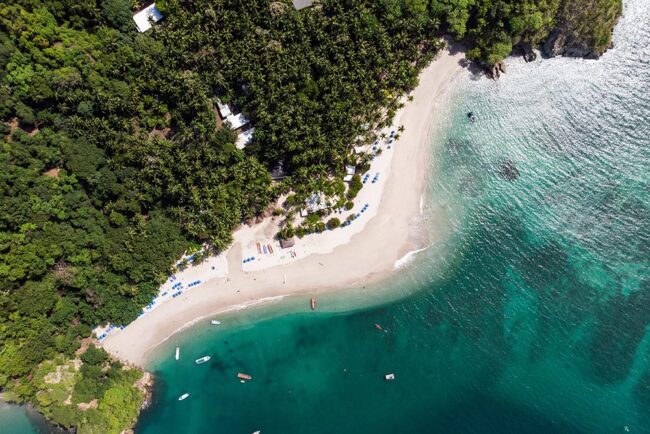Watch it Back – Keeper Solutions’ CTO Roundtable
One of the most interesting things that happens at Keeper Solutions are the conversations that we have with our clients and partners, especially with the diverse range of CTOs that we interact with on a weekly basis.
With COP26 having recently been held in Glasgow, Scotland we are all much more aware of the critical role that carbon output plays in achieving our sustainability goals. With that in mind, there is an interesting conversation to be had at the technology table. Now more than ever, the impact of the technical decisions that we make have a profound impact on our world. It doesn’t matter whether we’re innovators, developers, consumers or users.
Keeper CTO Roundtable – Discussing NFTs and Sustainability
At Keeper Solutions, we recently held our first CTO Roundtable where we brought together a group of individuals who have experienced NFTs in different ways – an artist, a FinTech innovator, a buyer and an NFT-builder. We wanted to dive deep into non-fungible tokens, what they mean for the future of technology and what impact they are having on the environment – find the full video at the bottom of this post.
CerealTom is an acclaimed digital artist from Dublin who was commissioned to create a piece of artwork on behalf of Keeper Solutions which was then minted as an NFT and gifted to staff and friends of Keeper Solutions (check out the piece of art he created below). With CerealTom, we wanted to discuss whether or not he thought that creating an NFT was the right thing to do from an environmental perspective.
Nicholas Holme is the CTO of Keeper Solutions. Nick has extensive experience in cloud solutions, business intelligence, project management, and implementation. And he’s a firm believer in Kaizen, the practice of continuous improvement.
Brian Lanehart is the CTO, co-founder, and president of Artis Technologies. Artis powers modern lending solutions for businesses to provide low-friction, affordable financing to their customers at the point of need. Their API-based platforms creatively leverage alternative data sources and ML/AI-informed decisioning to present real-time loan offers fit to each individual borrower. This is all done within the banking industry’s current regulatory infrastructure. Through working with Artis, Brian is entrenched in all things FinTech trends. Cryptocurrency and NFTs are a major part of that.

NFTs have been getting a lot of press recently, and everyone seems to be getting in on the action, from big brands to emergent artists. We invited all three to discuss the current trend around NFTs, the sustainability impact of blockchain and the key considerations for technologists and artists when looking at the NFT space.
Key Insights From Keeper’s CTO Roundtable
-
-
-
-
-
-
-
-
-
- Brian, reflecting on his time as a professional musician, noted how blockchain provides a remarkably effective way to control performance rights and intellectual property, a notoriously cumbersome, paper heavy process involving huge teams of lawyers. He also highlighted the opportunities presented by derivatives.
- Emily pointed to research that showed that early NFTs had a carbon footprint equivalent to an EU person’s electricity usage for two months.
- Nick took us through how NFTs are mined, why they require so much energy, and what the differences were between ‘Proof-of-Stake’ and ‘Proof-of-Work’ in relation to their energy costs and consumption.
- Emily and Nick discussed Keeper Tokens, a blockchain application that enables Keeper to incentivize, reward and engage individuals within the organisation through its own cryptocurrency token.
- Tom discussed his initial interest in NFTs and how other artists have been using them. He also shared how, in the beginning, his positive reaction soured when he noted the environmental backlash. However, when he raised his concerns with the team at Keeper, they revised their approach to ensure a more sustainable methodology would be used. The decision was made to switch from Etherium to Tezos, a much more environmentally friendly platform.
- Brian highlighted how it’s important not to look at anything in a vacuum. We need to consider what technology the blockchain is replacing, to fully understand the overall impact on sustainability.
- We discussed derivative applications for licensing, and we talked about the merging of corporate and art worlds. Brian touched on examples in Atlanta, with high rise buildings incorporating digital art displays in lobbies, bringing a fresh perspective to corporate spaces.
- We discussed ‘The Currency’ example from Damian Hirst, who sold 10,000 physical pieces of art for two thousand dollars each, and enabled each one to be claimed either as a tradable NFT or as a physical artwork.
- Brian pointed out that once banks get into backing NFTs as an asset, we will likely see it become a standard investment. They will go side by side with certain types of stocks or precious metals. He noted lenders that are experimenting with putting loans on the blockchain.
- Nick talked about the experimentation taking place in the payments space, and how the blockchain is driving efficiencies across currency conversions. He also touched on MedTech and its use in cybersecurity and verifications. He also touched on solar powered tokens that could possibly be traded in.
- Brian then touched on a start-up that’s running dual opt-in on the blockchain. This would empower the owner of the data to decide what they want to be shared. Lanehart discussed how this would transform the ownership of personal data on a worldwide scale.
- We talked about Europe’s GDPR standard, and how market leading firms around the world are choosing to adhere to those higher standards even though their own locations might demand less.
-
-
-
-
-
-
-
-
After an action-packed discussion, we came to the conclusion that blockchain technology is simply another tool in the CTO’s arsenal. Rather than rushing into it as the next big thing, CTOs should take the time to understand it, understand its long term impact on the business goals.
Whether it’s an artistic endeavor or a business one, the thought, creativity, innovation and impact should all be taken into consideration. From a sustainability perspective, it was also worth noting that with the move from proof-of-work to proof-of-stake, the industry is evolving quickly. With this move the industry is already responding to market demands for more sustainable and tolerable means to engage with the technology.
Watch the CTO Roundtable in full below.



